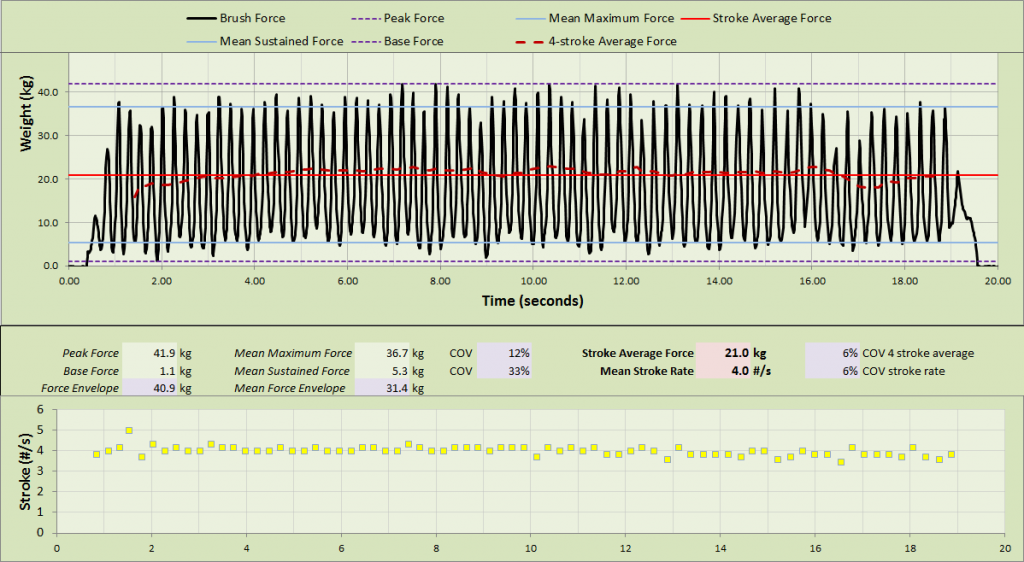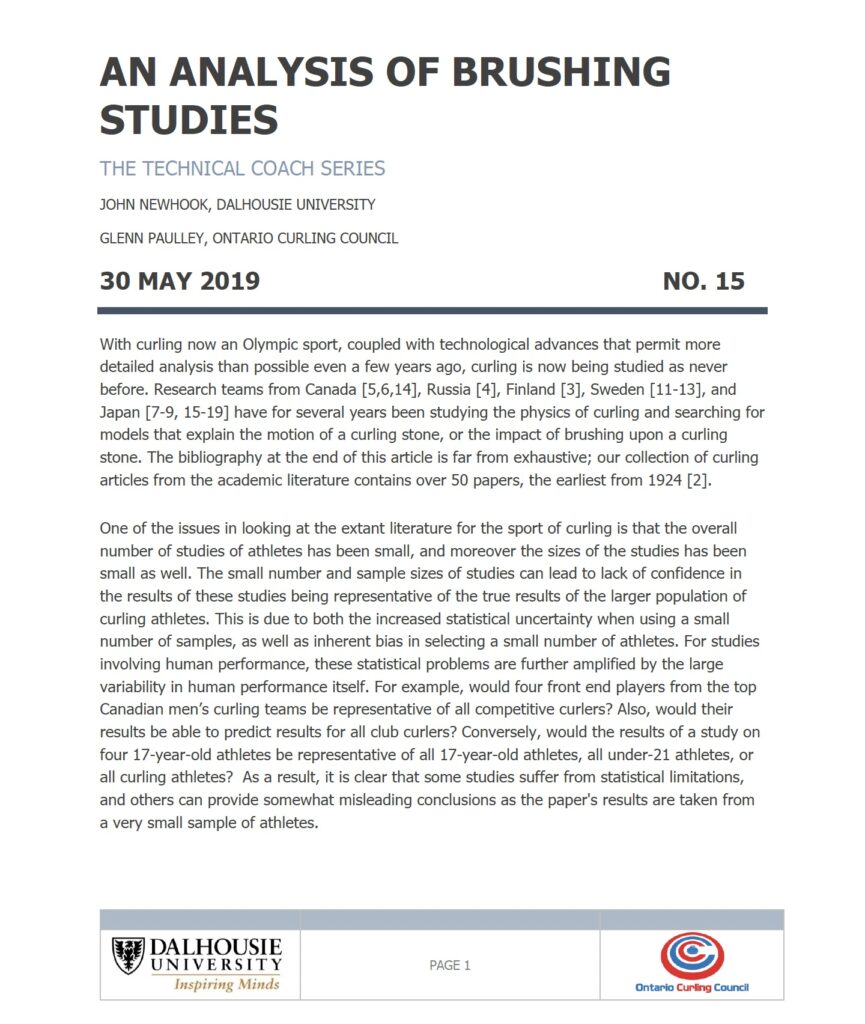This article is joint work with Professor of Engineering John Newhook of Dalhousie University in Halifax.
Since we began our collaboration during the winter of 2013-2014, John Newhook and I have been compiling normative data on brushing, John in Nova Scotia and the Maritimes and myself largely in Ontario and occasionally in Saskatchewan. We felt that this work was important since the few studies of brushing performance of which we were aware had very small sample sizes and had predominantly illustrated the performance of male athletes.
Since our initial trials in February 2014, John and I have together recorded over 2500 bouts for approximately 775 athletes across Canada. Many of these are Junior-aged athletes that we have worked with multiple times through annual high-performance camps, but we have also worked with younger athletes and with high-performance athletes who play on the Tour. As a result, from our study we have a solid understanding of average, above-average, and below-average brushing performance for athletes at every LTCD stage.
In this article, the 15th in our Technical Coach Series and published in May 2019, we analyze the results from two prior studies of brushing performance from the literature: one from Bradley (2009) and the other from Marmo, Buckingham, and Blackford at the University of Edinburgh (2006).
The description of the athlete(s) involved in these two studies is incomplete, but it is clear from the results that both studies considerably underestimate the performance of accomplished athletes and in turn also underestimate the forces involved in brushing by competitive players.
Our own studies demonstrates that male Tour-level athletes can generate 90%-95% of their body weight during the “push” portion of the stroke, and somewhere between 25%-30% of their body weight as their mean sustained force, which occurs during the “pull” portion of the stroke. For female athletes these thresholds are somewhat lower, with a mean maximum force of 75%-85% of their body weight, and again a normalized sustained force of 25%-30% of their body weight during the “pull” portion of the stroke.
Sample bout from a competitive female player
This example bout at right was captured for a university-aged female athlete who weighed 47 kg. For this bout (brushing in a closed stance):
- the athlete’s mean maximum force was 36.7 kg (78.1% of their body weight);
- the athlete’s mean sustained force was 5.3 kg (11.2% of their body weight); and
- the athlete’s mean force was 21 kg (45% of their body weight).
These results are typical for female Tour athletes and accomplished university- or Junior-level athletes, and easily eclipse the performance of the small number of athletes documented in the other two studies.

With having assessed 775+ athletes since 2014 we are able to recommend target performance levels for each LTCD stage. Moreover, our data has yielded other interesting aspects of brushing performance. Some examples are:
- Unsurprisingly, the vast majority of curling athletes have a strong preference for which hand is lower on the brush; hence most athletes will brush in the open stance on one side of the stone, and closed stance on the other. However, there are athletes who can achieve excellent performance with either hand. Emma Miskew, Brittany Tran, Dustin Mikush, Kaylin Skinner, and Connor Njegovan, who play on the Tour, are several examples; so is former Ontario mixed doubles champion Katie Cottril. But such skill is rare.
- Amongst the athletes we have studied there does not appear to be a preference for the use of the dominant (or non-dominant) hand in the low position, for either left- or right-handed players.
- For accomplished players the difference in performance between brushing in the closed stance, versus brushing in the open stance, is very small. A top-tier male player brushing in the closed stance will achieve a normalized mean force of 50%-55% of their body weight. We have also measured male athletes who can brush in the open stance with a normalized mean force of 56%.
- With other LTCD stages there are small variations in average performance between closed and open stances. These differences tend to be gender-and age-related. We plan to further analyze this data in future work.
References
Bradley, J. L. (2009). The sports science of curling: a practical review. Journal of Sports Science and Medicine 8, pp.495-500.
Marmo, B. A., M-P Buckingham, and J. R. Blackford (2006). Optimising sweeping techniques for Olympic curlers. The Engineering of Sport 6(3):249-254. Abstract: Sports Engineering 9(4), pp. 249.
